In our continuous efforts to enhance workplace safety, we previously discussed the critical aspects of reducing and swiftly responding to slips, trips, and falls, especially for lone workers. This focus is not only vital for immediate incident management but also underscores a broader commitment to proactive safety practices.
Today, we delve into an innovative approach known as Slips, Trips, and Falls (STF) Mapping, a strategic tool designed to visualise and preemptively address these common workplace hazards. STF mapping offers a tangible, data-driven means to analyse and mitigate risks, significantly enhancing safety protocols and protective measures.
The initial and foundational step in Slips, Trips, and Falls (STF) mapping is the creation of a workplace map. This map serves as the spatial canvas upon which potential hazards and recorded incidents will be identified and analysed. The objective is not to produce an architecturally precise blueprint but to create a functional and informative sketch that accurately reflects the layout relevant to STF concerns.
To begin, take a broad overview of your workplace, capturing all relevant areas where employees move or interact. While the map should be comprehensive, encompassing various work zones, common areas, and pathways, its complexity need not deter its creation. A simple hand-drawn sketch that outlines key locations, traffic flows, and entry or exit points suffices for this purpose. The emphasis should be on clarity and utility, ensuring that the map effectively communicates the spatial dynamics pertinent to safety analysis.
When drawing your map, consider including:
This map forms the groundwork for subsequent steps in the STF mapping process, where specific risks and incidents will be superimposed to illustrate and analyse the distribution and frequency of STF events within your workplace.
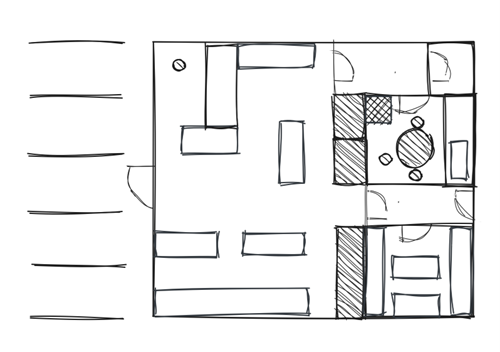
While tools like the Blackline Live portal offer advanced features to place digital floorplans and integrate live data, the essential first step remains accessible and straightforward: a clear, comprehensive sketch map tailored to your unique workspace.
Following the creation of a comprehensive workplace map, the next step in STF mapping is the identification and marking of high-risk areas. This process is instrumental in visualising and prioritising the spaces within your workplace that necessitate immediate attention to prevent slips, trips, and falls.
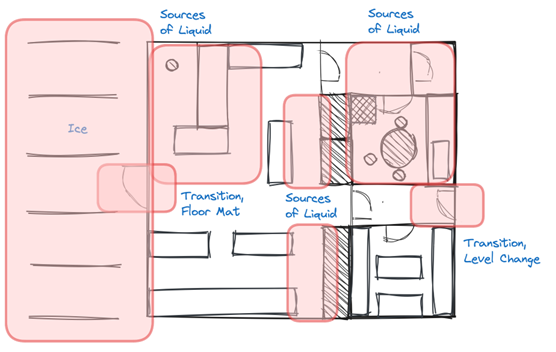
High-risk areas can vary significantly depending on the specific dynamics and characteristics of each workplace. Commonly, these areas include:
Each identified high-risk area should be clearly marked on your map, using a consistent symbol or colour coding for ease of reference. It’s also beneficial to note specific conditions or features that contribute to the risk, such as “wetwork area” or “high pedestrian traffic,” providing context that can inform subsequent risk mitigation strategies. The goal of this exercise is to lay a foundation for a proactive approach to workplace safety.
The third step in Slips, Trips, and Falls (STF) mapping involves meticulously marking the locations of past incidents and near misses on your workplace map. This process transforms your map into a dynamic tool, highlighting specific areas where accidents have occurred or are likely to occur, thereby providing invaluable insights for targeted risk mitigation.
To effectively mark incidents, you will need to reference your organisation’s accident book or electronic records. Each marked incident should ideally include relevant details such as the date, time, and cause, offering context that can inform preventive strategies. It’s also useful to distinguish between different types of incidents and near misses to identify patterns or recurring issues.
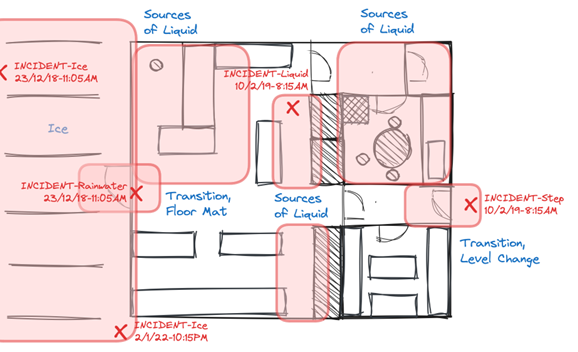
Visibility is key in this process, so consider using distinct symbols or colours to denote different types of incidents. This differentiation will enable rapid visual identification and analysis. Involving employees in this process, particularly those who are familiar with the daytoday operations and risks of the workplace, can provide additional insights and help ensure that all relevant incidents are captured.
Incorporating technology, specifically the G7C device, can significantly enhance this mapping process. Our G7C device utilises GPS technology to detect and record the exact locations of falls or near miss events, providing precise data that can be directly integrated into your STF map.
For example, if a logger repeatedly stumbles in a particular area, the G7C device can highlight this as a zone of concern, enabling health and safety officers to investigate and address the underlying hazard.
By leveraging such technology, organisations can move beyond static mapping to develop a dynamic, data-driven approach to workplace safety. The real-time data captured by devices like the G7C not only enriches the STF map but also facilitates a proactive response to emerging risks, ultimately fostering a safer work environment.
With the identification and mapping of high-risk areas and incident locations completed, the next crucial step in Slips, Trips, and Falls (STF) mapping is the implementation of safeguards. This phase is where the preparatory work translates into tangible actions aimed at reducing the risk of future incidents and enhancing workplace safety.
Guidance from authoritative sources like the Health and Safety Authority provides a solid foundation for determining appropriate safeguards. These protective measures should be directly informed by the specific risks identified during the mapping process. It’s essential to engage with employees and other personnel who share the workspace to gather insights and suggestions for effective safety interventions.
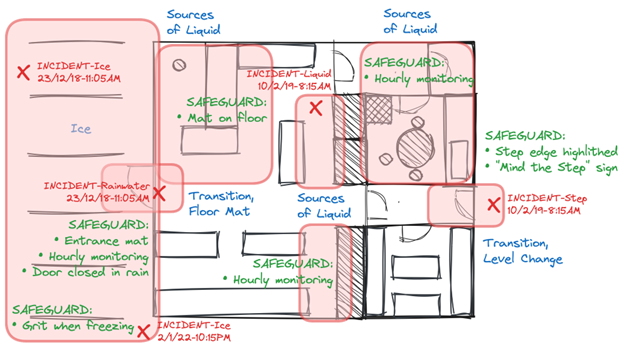
Safeguards might include physical modifications to the environment, such as installing additional lighting, applying non-slip coatings to floors, or correcting uneven surfaces. Administrative controls can also be crucial, like establishing protocols for immediate cleanup of spills or reinforcing the use of appropriate footwear.
Beyond location-specific measures, consider safeguards based on activities that occur within those High-risk areas. For example, routine floor cleaning might require specific protocols to ensure areas are marked clearly and are off-limits until completely dry. Adjusting the timing of such activities to less busy periods can also minimise exposure to risks.
Once identified, each safeguard should be clearly documented and communicated to all relevant parties. This documentation not only serves as a record of the organisation’s commitment to safety but also as a reference for ongoing training and awareness programs.
Finally, the effectiveness of implemented safeguards should be continuously monitored and evaluated. Regular reviews can identify opportunities for improvement or the need to adjust measures based on new insights or changes within the workplace. This iterative process ensures that the STF mapping and safeguard implementation remain dynamic and responsive to the organisation’s evolving safety needs.
* * *
The proactive measures detailed throughout this article should be a part of an ongoing commitment to workplace safety and employee wellbeing. By integrating these practices into your safety management system, you can create a more informed, responsive, and resilient safety culture that not only addresses current risks but also anticipates and mitigates future ones.
We encourage you to take the next step in your safety journey by utilising the resources and tools available to you. As a tangible action point, OBW Technologies offers a Slips Trips & Falls Map Template, designed to assist you in implementing the STF mapping process within your organisation. This template serves as a practical tool to guide your mapping efforts, helping you translate the insights from this article into concrete safety improvements.
From the Blog

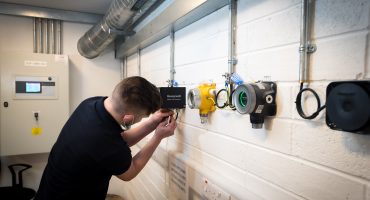
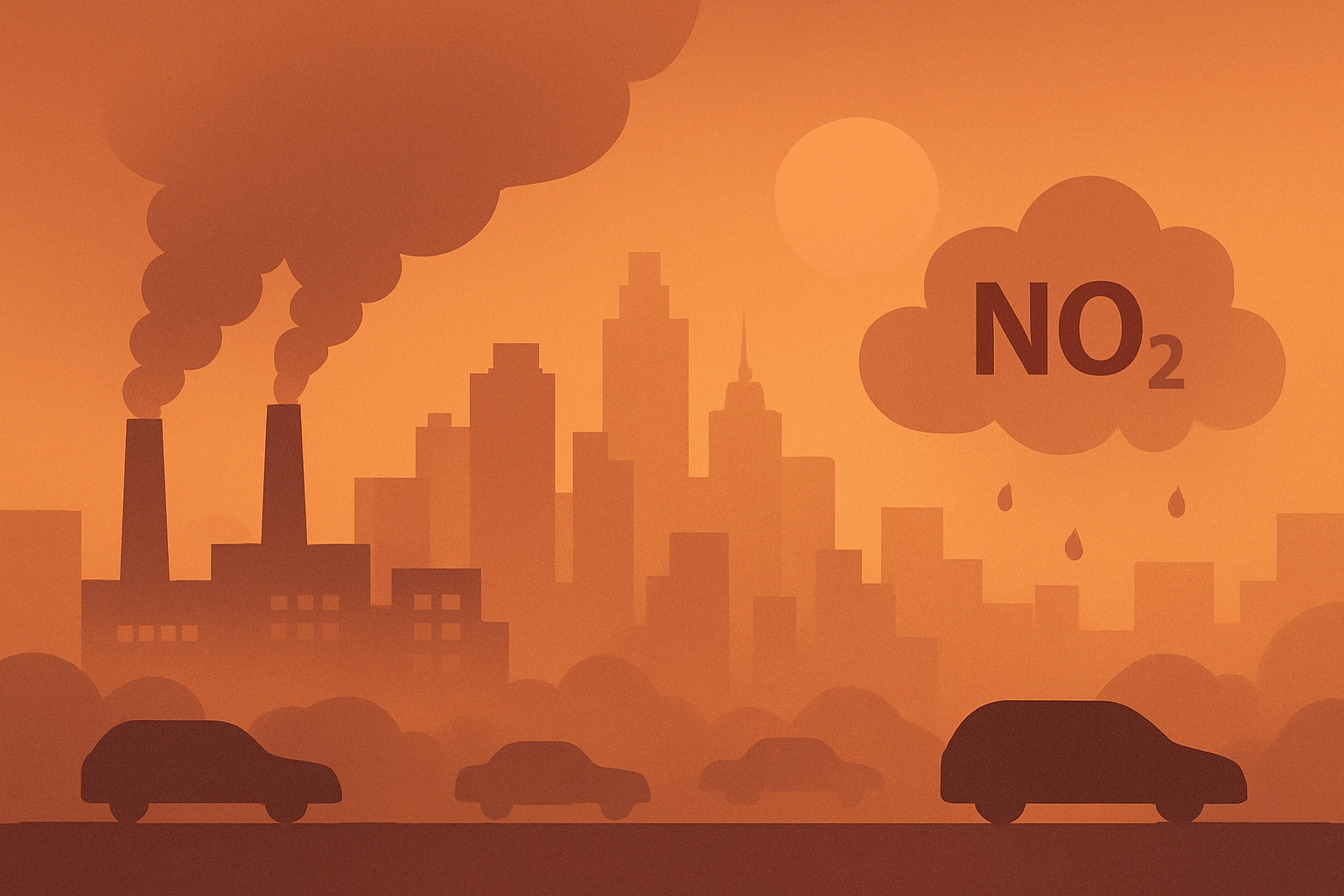
If you have any questions about our products or services, please feel free to contact us.

Join our mailing list to receive the latest news and updates from our team.